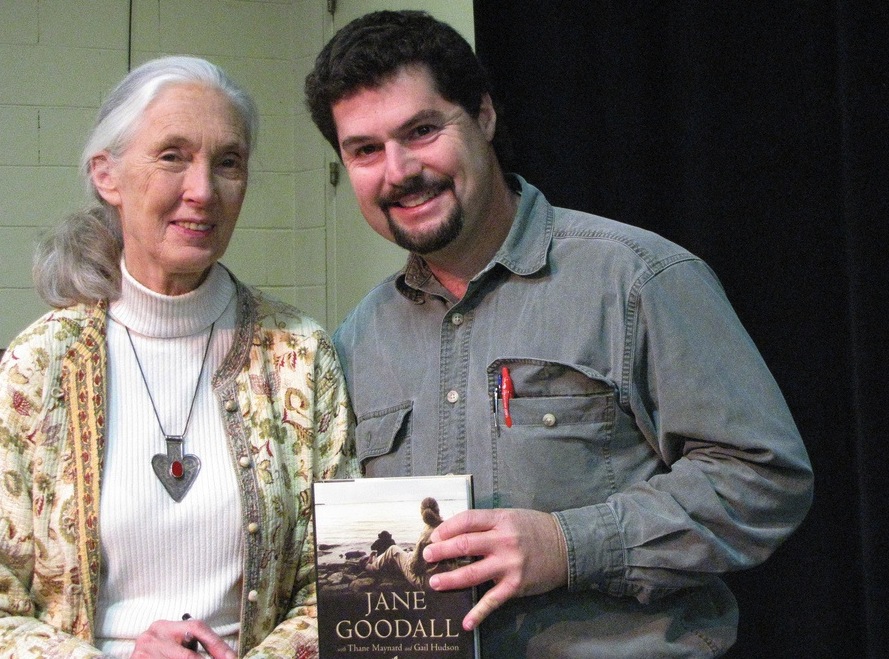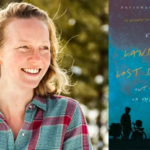Michael Shapiro has biked through Cuba for the Washington Post, celebrated Holy Week in Guatemala for the Dallas Morning News, and floated down the Mekong River on a Laotian cargo barge for an online travel magazine. His work also appears in the Los Angeles Times, San Francisco Chronicle and several national magazines. His book, A Sense of Place: Great Travel Writers Talk About Their Lives, Craft and Inspiration was published September, 2004, by Travelers’ Tales. The book includes interviews with Bill Bryson, Frances Mayes, Paul Theroux, Peter Matthiessen, Tim Cahill, Jan Morris, Pico Iyer, Isabel Allende, and Simon Winchester, among many others. Shapiro lives in Sonoma County with his wife and cat, spending his free time cycling, river rafting, sea kayaking and rooting for the Giants at San Francisco’s beautiful ballpark by the Bay.
How did you get started traveling?
With my family. We went to some relatively exotic destinations for a kid, for example to the coast of Portugal when I was 9, and the interior of Venezuela when I was 10. After my father died last year, I wrote a column reflecting on our travels as a family. It appeared in the San Francisco Chronicle last June under the headline, “A Travel Companion Who Never Let Go.”
I began traveling on my own when I was 18, spending four months in the Middle East. That was the first time I really understood that the New York Times wasn’t the beginning and end of truth, and that everything is a matter of perspective. After working for a couple of years as a news reporter in the San Francisco Bay Area, I decided there was more to life than writing about crime and city council meetings. So I quit, got a job as a river guide on California’s Kern River and then spent the fall and winter in Central America, mostly in Guatemala. I had saved only $1500 for five months, so I became adept at shoestring travel, even getting a couple of jobs (one with a rafting company in Guatemala and another with an English-language magazine in Guatemala City) which enabled me to extend my stay.
How did you get started writing?
I’ve kept impressionistic journals since high school and began as a news reporter for the Daily Californian at UC Berkeley. That led to jobs at newspapers in the San Francisco area.
What do you consider your first “break” as a travel writer?
My first travel story was a piece about the Spanish language schools of Antigua, Guatemala. I was studying Spanish with a private tutor and living with a family with board, all for about $100 a week. I wrote about the language schools and life in Guatemala and sent the story to the San Francisco Examiner. This was my first attempt at travel writing and after it was published I thought, “Hey, I can do this.” The next dozen or so pieces I submitted were rejected, but eventually I found a niche and had some success.
As a traveler and fact/story-gatherer, what is your biggest challenge on the road?
Forcing myself to be outgoing and meet people. I’m not by nature a gregarious person, but when I travel alone, a sort of loneliness can set in that impels me to meet others. The other challenge is getting too comfortable hanging out with the expats and not meeting as many locals. So I try to involve myself with locals on their turf, for example playing ta kraw with a bunch of young Thais or joining a group of Cubans on their local baseball field. I may not be able to play at their level, but they appreciate the effort.
What is your biggest challenge in the writing process?
Discipline. I’m such a sucker for distraction. On a beautiful day — and we have about 6 months straight of beautiful days here in the San Francisco area — I’ll take a long bike ride and tell myself I’ll write at night. And then at night there’s a great band playing or the Giants game is on TV…
What is your biggest challenge from a business standpoint? Editors? Finances? Promotion?
For me it’s that the type of writing I enjoy isn’t typically that lucrative. I’ve had some success writing, for example, about using the Internet for travel planning, and I’ve made decent money writing on these topics. But I love to write travel literature, and have yet to make a living on lit alone. So I continue to write travel news and service pieces. It’s a balance for me: to make ends meet I have to give the market what it wants from me, but I also follow my heart. My latest book, A Sense of Place, is emblematic of that.
Do you do other work to make ends meet?
I’ve done some freelance editing but I haven’t held a 9-to-6 job since 1998. I thought about selling Giants tickets on eBay, but dismissed the idea after I thought about the times I went to Grateful Dead shows and some kindred spirit sold me a ticket for face value when they could have earned more.
What travel authors or books have influenced you?
Many of the authors I interview in A Sense of Place have been seminal in my development as a writer. Among the most influential: Jan Morris, Pico Iyer, Bill Bryson, Tim Cahill, Paul Theroux and Peter Matthiessen. I appreciate Morris for her open and kind approach, for her preparation, the elegance of her writing and her whimsical sense of fun, and for all the small insights she brings to light. Her recent A Writer’s House is Wales is a slim volume but says so much about Jan’s life, Wales, and her place in her ancestral home. Her Trieste and the Meaning of Nowhere is elegiac.
Pico travels with Beginner’s Mind and lets himself get swept a way by a place. I’m currently reading his book Sun After Dark, another slim volume that says so much with few words.
Bryson appeals for his finely crafted humor. I’m partial to his first book, The Lost Continent which is more of a memoir than a travel book. Cahill’s brilliance is his fearless determination to get to the heart of a story. He says his goal is to make readers laugh and cry, but he also teaches, in a way that makes the reader want to learn more. He doesn’t lecture about why animals eyes shine different colors in the jungle at night. He takes the reader with him to that jungle, creates the scene by shining his flashlight and seeing eyes shine and then explains why animals’ eye reflect (it has to do with improving their night vision by amplifying light).
Matthiessen I appreciate for his precision and sparkling prose and his relentless desire to let the detritus of everyday life settle and see things clearly. I read The Snow Leopard years ago and recently re-read it and enjoyed it even more. I also love much of his recent work, such as The Birds of Heaven, a study of cranes around the world.
I like Theroux for his unvarnished honesty and the way he engages strangers. One of my favorites is The Happy Isles of Oceania, about his kayak peregrinations in the South Pacific. I enjoy his rail journeys and just finished Riding the Iron Rooster about his travels through China in the mid-1980s.
Finally, several authors have influenced me with their interviewing skills. Among the best, I feel, are Studs Terkel and Bill Moyers.
What are the most interesting insights you’ve gained from interviewing the travel authors in your newest book?
There are so many wise and thoughtful comments from these authors about writing and life that it’s hard to narrow down. One thing that struck me is how much these writers, who are often traveling, appreciate their homes. I think I said this best in the Afterword to A Sense of Place. Here’s a short excerpt:
“As I traveled from place to place, I wondered: How much do these great travelers and writers care about where they live? As frequent travelers, is their home important, or is travel their priority? I found that all the writers profiled in these pages care very much about where they live and that each is shaped in some way by the places, exterior as well as interior, they’ve chosen to call home. Tim Cahill said it best when he cited a weightlifting expression: You can’t shoot a cannon from a canoe.”
What advice would you give to someone who is considering going into travel writing?
Read relentlessly, but don’t try to be Bryson or Cahill. Learn from the masters but don’t try to emulate them. And keep writing even if you don’t get published. Writing is its own reward. On a more practical level, workshops, such as the annual travel writers seminar at Book Passage bookstore in Corte Madera, Calif., can be valuable for learning about the craft and making connections. Writers groups and good editors can also help. I created an online writers group called write-now where we exchange feedback on our work. Anyone is welcome to join:
What is the biggest reward of life as a travel writer?
The freedom to chart one’s course and be creative in the world. There have been moments — for example when I was writing the introductions to some of the chapters in A Sense of Place — when I felt as though I’ve been in the universal flow. The writing sometimes comes from someplace beyond me. My job is to clear a channel and let it flow through me and onto the page.
I also love it when I see someone sitting on a park bench on a Sunday reading an article I wrote for the Chronicle or getting an email from a reader saying my book has made a difference in her life. Sure that’s ego and vanity, but I’ve yet to transcend that.





